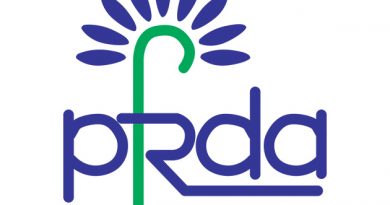Nike vs. Adidas: How Sports Titans Are Battling for Brand Dominance at the World Cup

It’s touted as the most widely viewed sporting event in the world, drawing 32 national teams and more than 1 billion spectators in an exhilarating display of athletic competition.
So it’s no surprise the World Cup offers an unparalleled platform for global sports apparel giants to battle it out for brand dominance — and no rivalry in this arena is greater than that of Nike and Adidas.
This year, German outfitter Adidas commemorates 20 years as an official partner of soccer’s international governing body, FIFA. Between 2006 and 2016, it has seen more than double the growth of soccer-related sales.
But rival Nike is also vying for the market’s top spot, making headway through advertising, major team and player sponsorships, product kit drops and high-profile endorsements.
As the official game-day uniform supplier for both the NFL and the NBA, the Swoosh continues to extend its influence in soccer, amping up its representation with a lineup of World Cup kits (recall the buzz that surrounded Nigeria’s Super Eagles jerseys) and exposure via top brand ambassadors including Portugal superstar Cristiano Ronaldo and Brazilian legend Neymar.
Although it recently made headlines for denying the Iranian national team cleats due to global sanctions against the Middle Eastern country, Nike is still providing products for 10 countries, including mainstays like France and England.
On the other hand, Adidas — which seeks to be most influential brand during the 2018 World Cup — has built a solid foundation in the sport’s history. Not only is it the official sponsor, supplier and licensee of the tournament, it also put significant money behind naming its Telstar 18 the official match ball of this year’s event. The company additionally retains bragging rights through its roster of players, with Argentina’s Lionel Messi, Egypt’s Mohamed Salah and Spain’s Diego Costa among the most recognized names.
“Adidas will be present on the pitch in every single match,” CEO Kasper Rorsted said. “We will make sure to leverage the World Cup to further increase the desirability of the Adidas brand and continue to expand Adidas’ market leadership in football.”
Over the next month, the brand’s signature three stripes will be seen on 12 teams — such as host team Russia, Mexico and even defending champions Germany — as well as more than 300 players and the games’ referees.
“Adidas has slightly more teams this year than the last [World Cup in 2014] and more than Nike, so that gives them a leg up,” said Matt Powell, senior industry adviser for sports at The NPD Group Inc. But, like a good underdog story, Nike shouldn’t be counted out just yet.
“This World Cup is starting out to be pretty surprising,” Powell explained. “Some of the supposed powerhouse countries aren’t doing nearly as well, and some of the upstarts are doing better.” (For instance, Mexico trumped current World Cup holders Germany, and the favored Brazil failed to topple Switzerland.)
Powell added: “If an underdog team wins, that could have a nice lift to the business. If it’s a traditional team, typically there’s not nearly as much life because they’ve been there before. It’s sort of the unusual or unexpected thing that has a bigger impact on sales than the expected.”
courtasy : footwearnews.com
photo : CNN Money
[social_warfare buttons=”Facebook,Pinterest,LinkedIn,Twitter,Total”]



